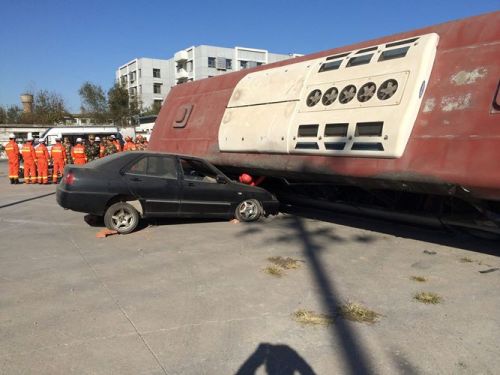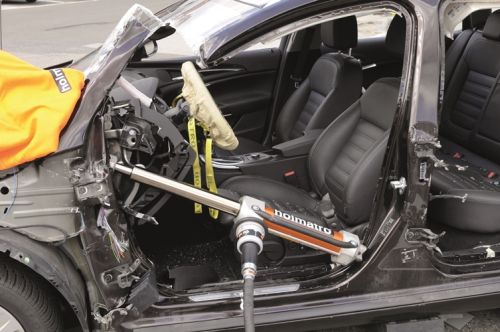Making the Most of Precious Resources
I have just returned from Beijing, China. Like a lot of other countries, getting vehicles to train with can be difficult here, so we had to plan well in advance to ensure we had the necessary training aids. There are many reasons for this but it does mean that we must get as much from a vehicle as possible when it comes to practical hands on training, otherwise we are simply wasting a very valuable training resource.

Type of cars for training
There are a few basic rules I have when trying to arrange cars for training:
- Try and make sure they are 5-door vehicles (4 doors plus rear hatch). This means that more personnel have the opportunity to practice door opening/removal techniques.
- Ensure they are late model vehicles where possible. This gives more realistic training in terms of vehicle strength and profiles. They will also have more SRS/Airbags.
- Make sure they are as complete as possible. Missing components reduce the realism of the training session e.g. a car with no engine provides unrealistic conditions when practicing stability. Similarly a vehicle with no interior means that internal space creation simulation is not possible.
Of course these points are only for guidance and it is worth bearing in mind that getting the same type of vehicle over and over again will also limit your options so from time to time; so:
- Get a 3-door vehicle. This means that techniques such as 3rd door space creation can be practiced. In addition, 3 door vehicles tend to have a larger opening between the B post and the dash.
- Get a vehicle with a boot (trunk) rather than a hatchback. This means that tunnelling techniques can be practiced.
- Get a vehicle that is out of the norm e.g. 4x4 or SUV. These vehicles offer different challenges when it comes to stability, for example.
What could you practise?
Once you have your vehicle, look at it and make a list of what is possible. If I look at a 5-door vehicle on its wheels for example, I can do the following:
- Full safety assessment
- Practice initial patient contact
- Full 5/6 point stability
- Gaining access to 12v battery compartment
- Full glass management by leaving glass in place/winding window into door and breaking/managing glass whilst door open or door closed
- Front wing (fender) crush to open shut lines and expose hinges
- Opening shut lines using halligan tool
- Front door removal by spreading/cutting the hinges or front door removal by spreading the lock to gain access, then spreading the hinges to remove the door
- Exposing interior trim
- Internal space creation (moving seats/moving steering wheel/seatbelt adjustment/head rest removal/front seat removal)
- Dashboard roll
- Dashboard lift
- Rear door removal by spreading/cutting the hinges, a B-pillar rip (removing full side) or a B-pillar removal
- Entry through rear hatch
- Rear seat removal
- Roof flap forward or to the side
- Roof removal
- Longboarding techniques from rear/side of vehicle
Remember, that list is just for one type of vehicle in one orientation (on its wheels).
Correct order
The important thing here is to make a list that is in the correct order. An order which allows the maximum to be achieved without missing any opportunities the vehicle presents. For example, if you go ahead and perform 2 x B-pillar rips you have immediately lost the ability to perform a dashboard roll by ramming off the B-pillars (of course you can improvise a ramming point!).

Please keep in mind that practising your procedures in the right order will maximize the opportunities offered by the vehicle.
Other considerations
Try and video as much as you can. The use of smart phones now makes this very easy and if (in the future) you cannot get a training vehicle, at least you have a visual reference for the basis of a theoretical discussion. One last point: once you have ordered your vehicle, made your list and planned your training, make sure you mark the vehicle with your initials or better still, the words ‘KEEP OFF’. There is nothing worse than coming on duty to find that another shift from your fire department has decided to use the car for their training. We all know that happens all too often!
As ever I welcome your feedback.
Ian Dunbar